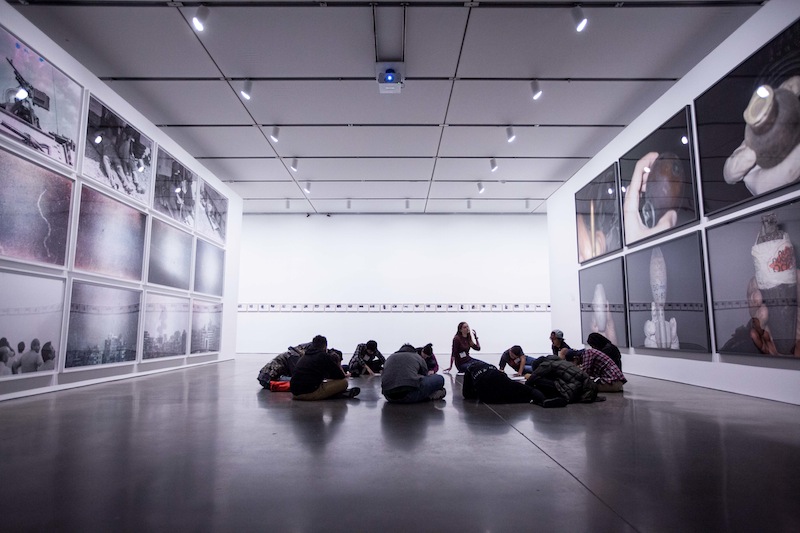The Center for Curatorial Leadership program offers curators the opportunity to focus on honing their leadership skills through a combination of Columbia Business School classes, meetings with cultural leaders, a diversity mentoring initiative, and a residency with the director of another museum. I was incredibly lucky to be paired with my first choice, the ICA’s own Ellen Matilda Poss Director Jill Medvedow.
I had shared with Jill my desire to learn more about what it’s like to work inside a museum in the United States. This may sound crazy for you readers who see that I am a curator at the Guggenheim. The reality is that in the twelve years I have worked there, our offices have been in downtown Manhattan, far from the Frank Lloyd Wright museum on Fifth Avenue, and a majority of my projects have unfolded in other countries.
During my week at the ICA, I was able to leave a curatorial meeting about an upcoming collection show and go straight to the galleries to study the current collection display and reflect upon the plans for a large-scale summer collection exhibition being organized by Barbara Lee Chief Curator Eva Respini and her team. I later got to meet members of the Teen Arts Council and sit down for a chat with David Henry, Bill T. Jones Director of Performing and Media Arts, before going together to the dress rehearsal of Court/Garden, an interactive performance that involved all of us. I was so energized, by the teens especially, whose enthusiastic engagement encouraged me to forget that it was the end of a long (but exciting!) day and join in the action.
I was so energized, by the teens especially, whose enthusiastic engagement encouraged me to forget that it was the end of a long (but exciting!) day and join in the action.
Jill also arranged for me to visit other museums around the city. I went to the MIT List Visual Arts Center, the Harvard Art Museums, the Ethelbert Cooper Gallery of African & African American Art at the Hutchins Center at Harvard, and the Museum of Fine Arts. I had the chance to visit the Barbara Krakow Gallery, where Barbara and I spoke about some of the artists and exhibitions that have meant the most to us. At each stop, colleagues welcomed me and openly discussed some of the challenges and opportunities we face as arts professionals trying to deliver meaningful experiences to our audiences.
Upon returning to the ICA from my sojourn around the city, I reflected upon its unique contributions to the Boston art scene and beyond. Be it the historic survey Leap Before You Look: Black Mountain College 1933–1957 or the current exhibition Walid Raad, the ICA is presenting shows that are not just about looking at objects. They take the viewer on a journey across time and space, reinforcing the central importance of history and memory and the vital role of performance in contemporary art.
I am tremendously grateful to Jill Medvedow and the ICA staff and board, as well as the many other colleagues I met, for reminding me that art can be surprising, exciting, and catalyzing.
